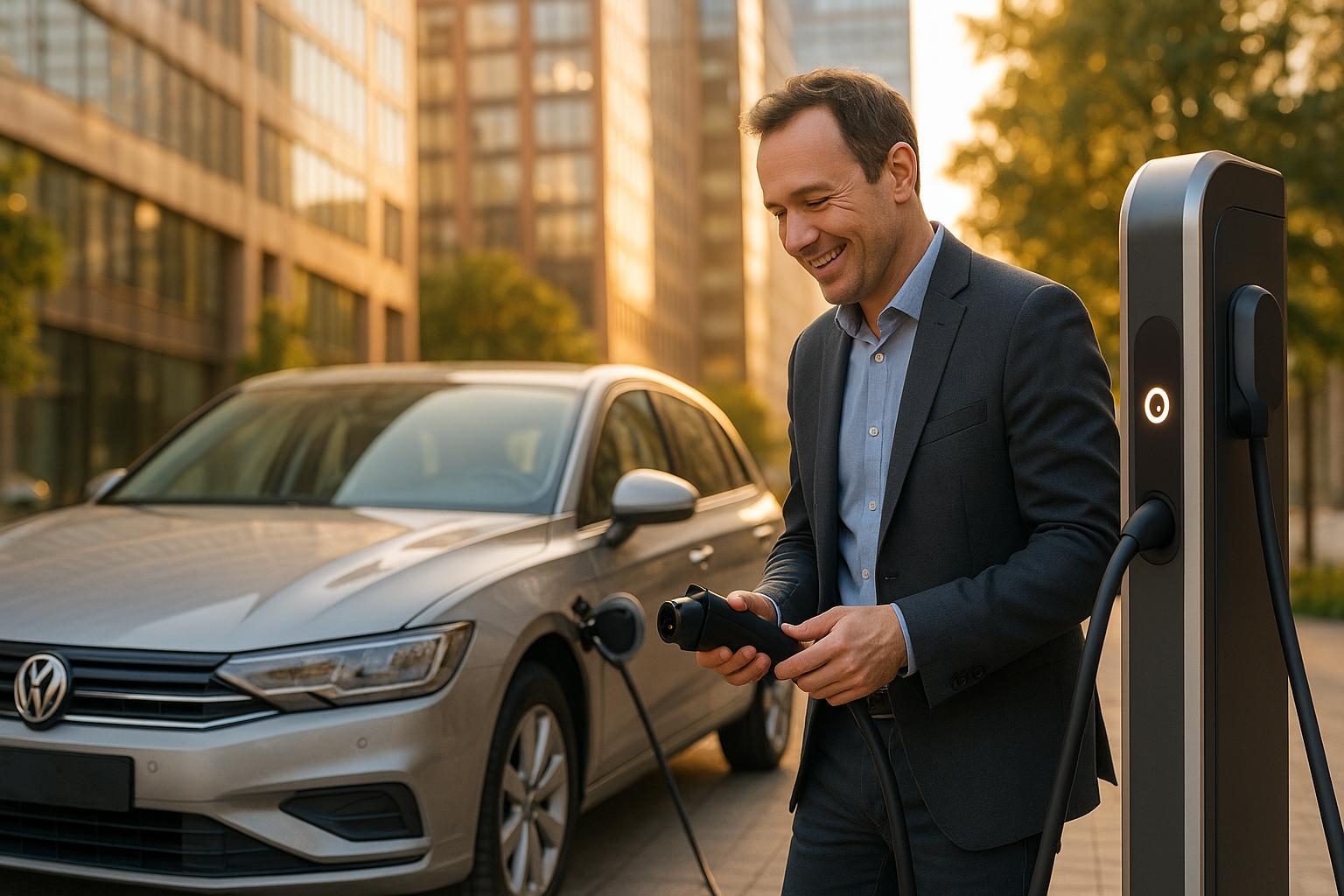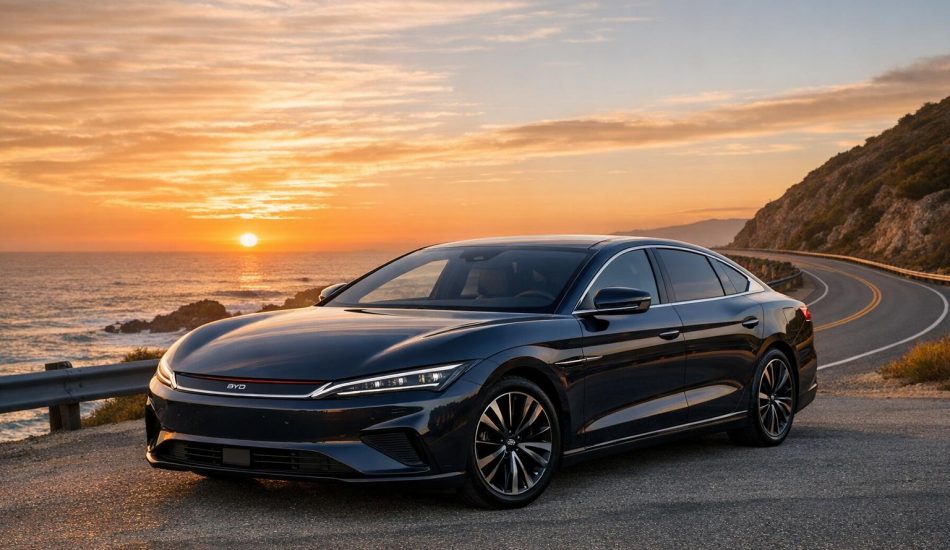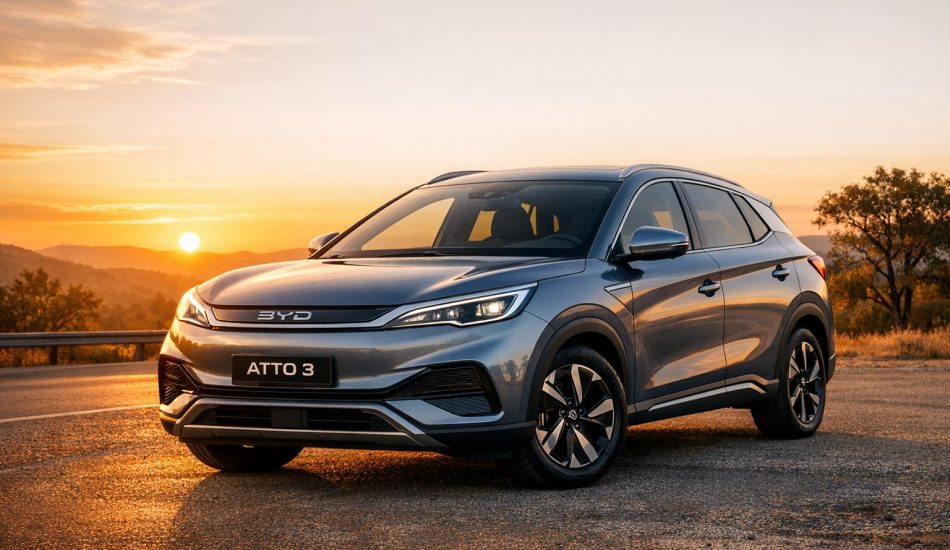
Used electric vehicles (EVs) are becoming a practical choice for buyers due to improved battery durability, lower maintenance costs, and more stable resale values. Here’s what you need to know:
- Battery Degradation: Modern EVs lose capacity slower than before, with annual degradation dropping to 1.8% by 2024. Batteries now last 15-20 years, often outliving the vehicle itself.
- Maintenance Costs: EVs generally require less upkeep than gas-powered cars. Battery replacements are rare, and software updates improve performance over time.
- Resale Value: Brands like Tesla, BYD, and Hyundai retain value well, thanks to reliable batteries and service networks. Strong charging infrastructure also boosts resale prices.
- Market Growth in Africa: Platforms like EV24.africa make it easier to access used EVs, offering over 200 models. Expanding charging networks in countries like South Africa and Kenya support this growth.
Key Takeaway: Used EVs are more reliable and cost-effective than ever, making them a smart option for those looking to transition to electric mobility.
Second hand EVs battery health revealed by Pickles research – Two Blokes Talking Electric Cars
Battery Life and Degradation Data
Recent studies shed light on how long EV batteries last and how they degrade over time. These findings provide a clearer picture, building on earlier discussions about battery performance and offering precise data to guide informed choices.
Battery Lifespan and Annual Degradation Rates
Older EV models often show more noticeable capacity loss, but advancements in battery management systems have significantly improved the lifespan of newer models. The actual lifespan of a battery depends on the manufacturer and specific model. To reassure buyers, many manufacturers include warranties that guarantee a certain level of capacity retention, which is especially helpful for those considering used EVs on platforms like EV24.africa.
How Climate and Usage Affect Battery Health
The environment and how you use your EV play a big role in battery health. High temperatures, for instance, can speed up degradation, especially when the vehicle is exposed to prolonged heat. Charging habits also matter – frequent fast charging or letting the battery drain too much can cause extra wear. Even parking in direct sunlight can add thermal stress to the battery. To help extend battery life, it’s smart to keep charge levels moderate for daily use and park in shaded or covered areas whenever possible.
New Battery Technologies
Newer battery technologies are making EVs more robust and efficient. For example, lithium iron phosphate (LFP) batteries are more durable than older chemistries, and solid-state batteries, which are still under development, promise better capacity retention and improved thermal stability. On top of that, advanced battery management systems and integrated designs are optimizing performance, ensuring that even today’s used EVs can offer reliable operation for years to come.
Maintenance Costs and Reliability Data
When considering used EVs, maintenance costs and reliability play a major role in determining their overall value. These factors depend on the manufacturer, specific components, and how the vehicle is used over time.
Repair Costs and Parts Replacement
Thanks to advancements in battery technology, the need for battery replacements has become rare during typical ownership periods. While EVs generally require less maintenance than traditional vehicles, routine wear-and-tear components still need attention. Software updates, which occasionally require a trip to a service center, often enhance performance and efficiency. Repairs to systems like HVAC are less frequent compared to similar features in gas-powered vehicles. However, repair costs can vary significantly between brands, which directly affects overall reliability.
Brand Reliability Comparisons
Reliability among EV brands differs and has a direct impact on maintenance costs. For example, Tesla models are often praised for their durable drivetrains, though their interior quality can be inconsistent. Well-established brands like Toyota and Hyundai are known for dependable performance and accessible service networks. Meanwhile, newer manufacturers from China are showing promising reliability trends. On the other hand, luxury EVs often come with higher maintenance costs due to premium parts and specialized service requirements. Understanding these trends is essential for evaluating long-term costs.
Maintenance Cost Changes Over Time
The cost of maintaining used EVs has been steadily improving. Better battery technology and easier access to replacement parts have helped lower repair expenses. Additionally, the growing number of independent service providers – with more competitive labor rates than traditional dealerships – has made EV maintenance more affordable. Enhanced diagnostic tools and streamlined repair procedures have also contributed to reducing labor costs, making ownership less expensive over time.
Used EV Resale Value Trends
When it comes to used electric vehicles (EVs), resale value is a key factor in assessing their long-term appeal. Alongside battery performance and maintenance, resale value offers a clearer picture of how well an EV stands the test of time. Recent data reveals that resale value is influenced by factors like brand reputation, technological advancements, and overall performance.
Depreciation Rates by Brand and Model
Not all EV brands hold their value equally – depreciation rates can vary widely depending on factors like battery reliability, cutting-edge features, and service support. Tesla vehicles, for example, are known for retaining their value exceptionally well. BYD benefits from dependable battery systems and competitive pricing, making it a strong contender in the market. Hyundai’s EVs, such as the Kona Electric, leverage the brand’s reputation for quality and strong customer service, while Toyota’s electric models are admired for their durability and extensive service networks.
It’s worth noting that regional market conditions, the vehicle’s history, and the pace of new technology rollouts also play a role in depreciation. These factors combined help shape how market demand impacts resale value.
Market Demand Effects on Resale Value
Beyond brand-specific trends, market conditions significantly influence resale prices. For buyers, the state of the EV’s battery is often a top priority – having a well-documented battery history can make a big difference. Features like extended driving range and advanced connectivity systems also boost appeal. In regions with strong charging infrastructure, such as areas supported by platforms like EV24.africa, resale values tend to be higher. Additionally, easy access to spare parts and a reliable service network can increase buyer confidence and, in turn, pricing.
Tips for Maintaining Resale Value
If you’re looking to maximize your EV’s resale value, a little care and attention can go a long way. Here are some practical tips:
- Take Care of the Battery: Avoid overusing fast charging and aim to keep the battery level between 20% and 80%. Save full charges for longer trips.
- Keep Detailed Maintenance Records: Document all maintenance, software updates, and warranty work to reassure potential buyers that the car has been well cared for.
- Stay on Top of Software Updates: Regularly update your EV’s software to improve performance, efficiency, and even add new features that enhance its appeal.
- Maintain the Physical Condition: Clean your EV regularly, address minor damages, and keep an eye on tire and brake wear.
- Retain Charging Equipment: Including original charging cables and other accessories when selling can add convenience and value for buyers.
- Mind the Mileage: While lower mileage often translates to a higher resale price, EVs generally experience less wear on mechanical components compared to traditional gas-powered cars, which can help offset concerns over higher mileage.
sbb-itb-99e19e3
Future of the Used EV Market
The used electric vehicle (EV) market is evolving rapidly, shaped by advancements in technology, changing consumer preferences, and the steady growth of charging infrastructure. With more data available on long-term performance and maintenance, used EVs are becoming an attractive option for buyers looking to embrace electric mobility at a more affordable price. Let’s explore how market growth, technology developments, and shifting consumer behaviors are redefining this space.
Used EV Market Growth in Africa
Africa is seeing a surge in interest in the used EV market, driven by several key factors. A growing population of tech-savvy consumers is increasingly drawn to sustainable transportation options. Older EV models with proven performance records are boosting buyer confidence, while the high cost of new EVs makes the used market a more practical entry point for many.
Economic factors are central to this growth, with financing options making it easier to own used EVs across the continent. Expanding charging networks in countries like South Africa, Kenya, and Morocco are also making EV ownership more feasible. These infrastructure improvements are helping to address long-standing concerns about practicality, creating a stronger foundation for wider adoption.
Technology Changes Affecting Used EVs
Ongoing advancements in technology are transforming the appeal of used EVs. Improvements in battery technology and software updates ensure that older electric vehicles continue to deliver reliable performance for years, boosting buyer confidence in pre-owned models.
Enhanced charging efficiency is another game-changer, making older EVs more practical for daily use. Additionally, declining battery replacement costs and the growth of service networks are addressing some of the biggest concerns prospective buyers have. Together, these technological shifts are making used EVs a more viable option for a broader audience.
Consumer Adoption Patterns and Barriers
Consumer behavior is a critical factor in shaping the future of the used EV market. Early adopters are paving the way by providing detailed performance records that help new buyers make better-informed decisions. For many, affordability is a key motivator, as pre-owned EVs offer a cost-effective alternative to new models.
While some buyers still experience range anxiety, the expansion of charging infrastructure and positive performance data are helping to ease these worries. The availability of original parts and reliable service networks – backed by major manufacturers like Toyota, Hyundai, and BYD – is further improving the ownership experience.
Shifting attitudes are also playing a role. Growing awareness of environmental concerns and the practical benefits of used EVs is encouraging more people to consider electric mobility. Businesses and individuals alike are recognizing the operational and sustainability advantages of pre-owned EVs, helping to drive adoption across different segments. These trends underscore the increasing confidence in the long-term reliability and value of used electric vehicles.
Conclusion: Main Points on Used EV Performance
Research highlights that used EV battery performance often surpasses expectations. Today’s EV batteries are built to last 15-20 years, frequently outliving the vehicles they power. Battery degradation rates have also improved significantly, dropping from 2.3% annually in 2019 to just 1.8% by 2024. For example, Tesla’s Model 3 and Model Y batteries maintain 85% of their capacity even after 200,000 miles.
Maintenance costs remain a major advantage for EVs. Battery replacements are rare – only 1.5% of 15,000 monitored vehicles required a replacement for any reason. The economic outlook for EVs has also evolved, with battery costs decreasing from 60% of an EV’s value in 2015 to 33% by 2020, and projections suggest they will drop to 20% by 2025. These trends contribute to lower overall costs and improve resale value over time.
Real-world data shows that EV batteries last about 38% longer than laboratory estimates, which bolsters their resale value. With the average lifespan of a battery electric vehicle estimated at 18.4 years and covering 124,000 miles – on par with traditional gasoline cars – used EVs provide a reliable and practical long-term investment.
In Africa, the used EV market is gaining momentum, supported by platforms addressing traditional adoption challenges. EV24.africa has played a key role in this growth, receiving over 350 qualified vehicle requests from more than 30 African countries in just three months after launching. The platform has successfully delivered vehicles to ten African countries and offers access to over 200 EV models from more than 50 manufacturers, demonstrating how comprehensive support services can drive market expansion.
"In just three months, we’ve proven that the demand for electric mobility in Africa is not only real but accelerating. Our team is building more than just a marketplace – we are creating the infrastructure and services to support Africa’s electric transition on a large scale." – Younes Rabeh, Business Manager, EV24.africa
FAQs
How do climate and driving habits affect the lifespan and performance of used EV batteries?
The longevity and performance of used EV batteries depend heavily on environmental factors and driving behaviors. Extreme temperatures are a key factor – hot climates can accelerate battery wear due to increased chemical stress, while cold temperatures may temporarily lower power output and efficiency. Batteries tend to fare better in moderate climates.
How you drive and charge your EV also plays a big role. Frequent use of fast chargers and consistently driving long distances can wear out the battery more quickly. In contrast, habits like charging at moderate speeds and avoiding deep discharges can help the battery last longer. Typically, EV batteries are built to last 10 to 20 years, depending on usage and care.
How can I maintain my used EV and boost its resale value?
To keep the resale value of your used EV strong – or even boost it – pay close attention to battery health. Stick to practices like avoiding frequent fast charging, maintaining the battery charge between 20% and 80%, and staying on top of software updates. These habits can play a big role in preserving the performance and appeal of your vehicle over time.
Another important factor is regular maintenance. Routine tasks like tire rotations, brake checks, and fluid inspections are essential. Plus, keeping your EV spotless – both inside and out – and maintaining a detailed service record can make a great impression on potential buyers. When it’s time to sell, emphasize key features like driving range, charging options, and any upgrades you’ve added. These details can help your EV stand out and attract more interest.
How is the expansion of charging infrastructure in Africa improving the practicality of used EVs?
Charging Infrastructure Boosts Used EV Appeal in Africa
The growth of charging networks across Africa is transforming used electric vehicles (EVs) into a more practical and attractive option for drivers. By 2025, public charging stations are projected to jump from fewer than 1,000 in 2021 to over 20,000, thanks to investments totaling around $1 billion. This expansion is helping to ease concerns about range limitations while making EV ownership far more convenient.
What’s even better? Many of these charging stations are powered by renewable energy sources, adding an eco-friendly edge to the region’s EV adoption. With infrastructure improving at such a pace, used EVs are becoming a smart and sustainable choice for urban commuters across Africa.




